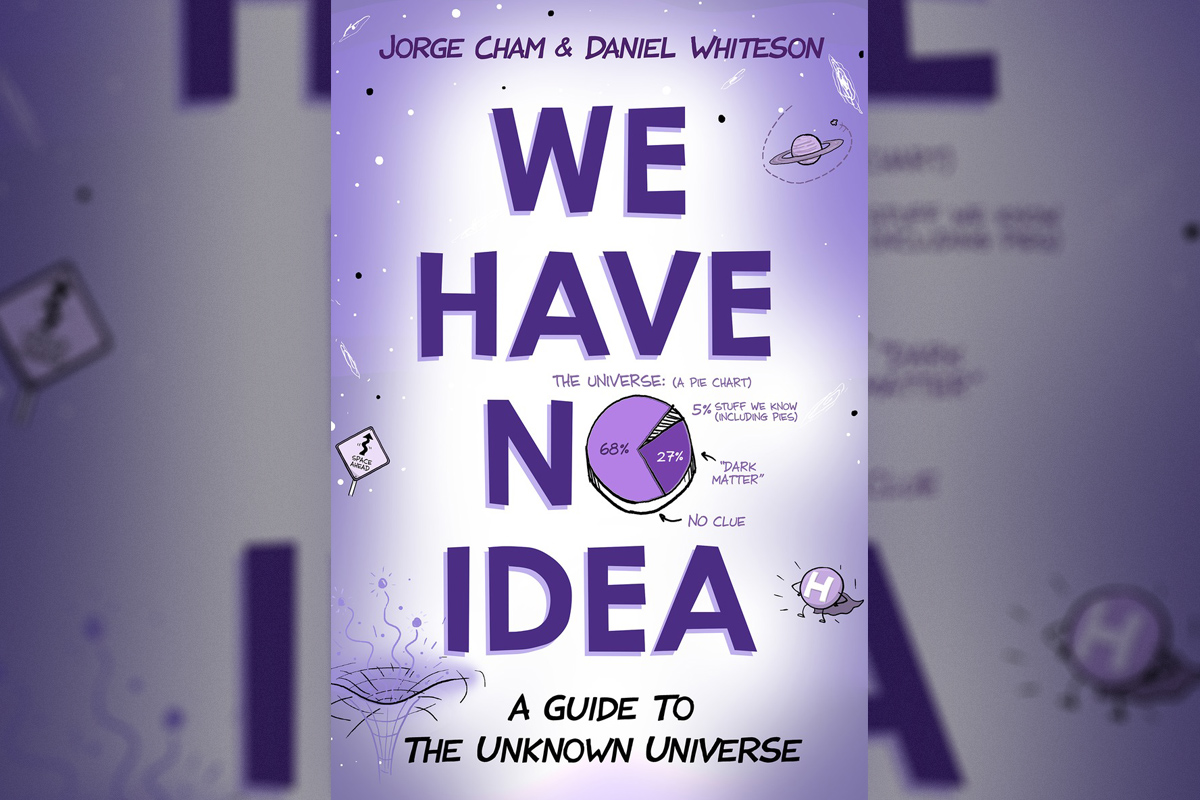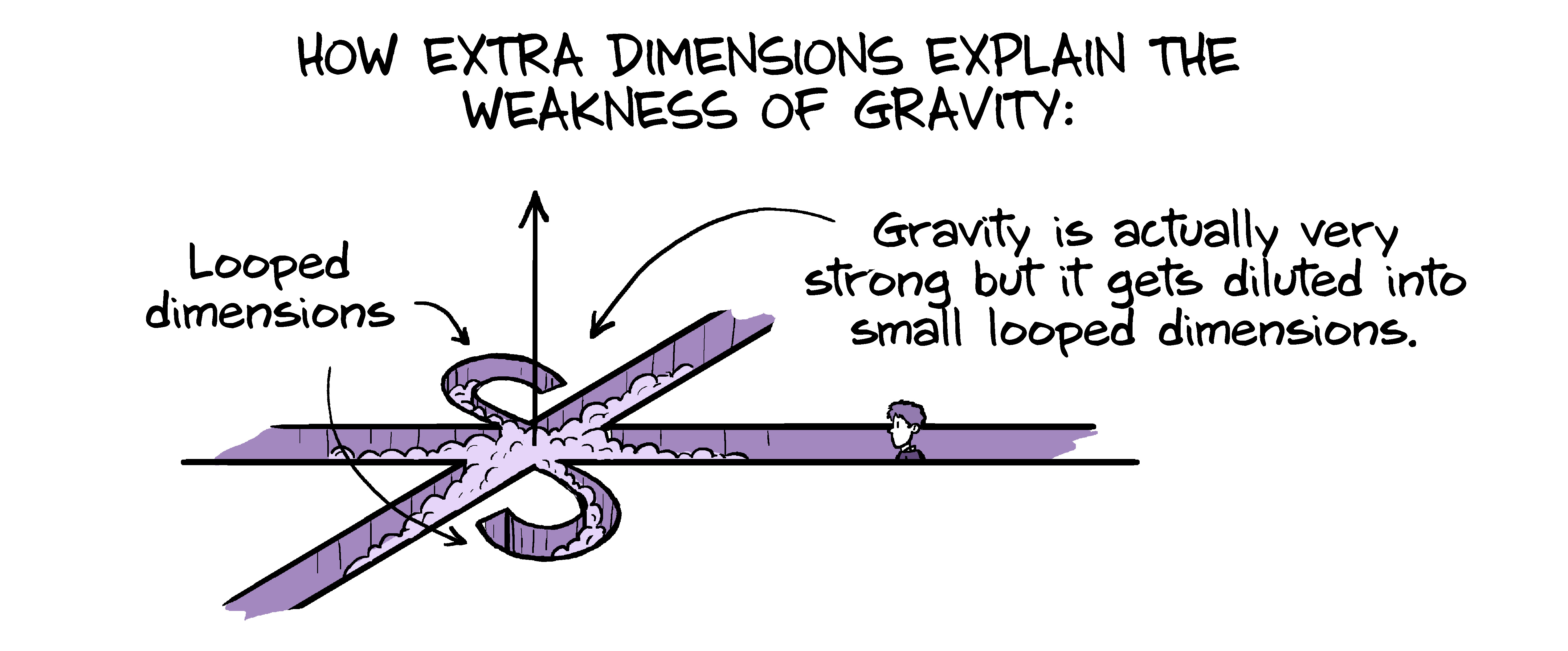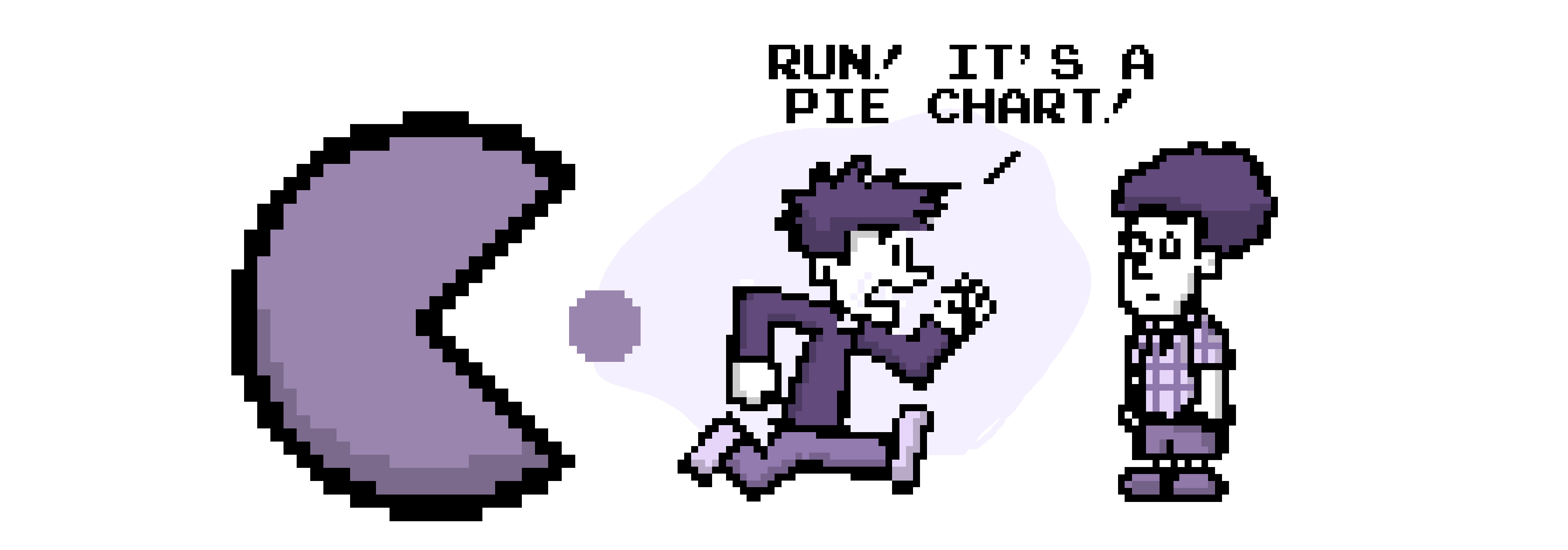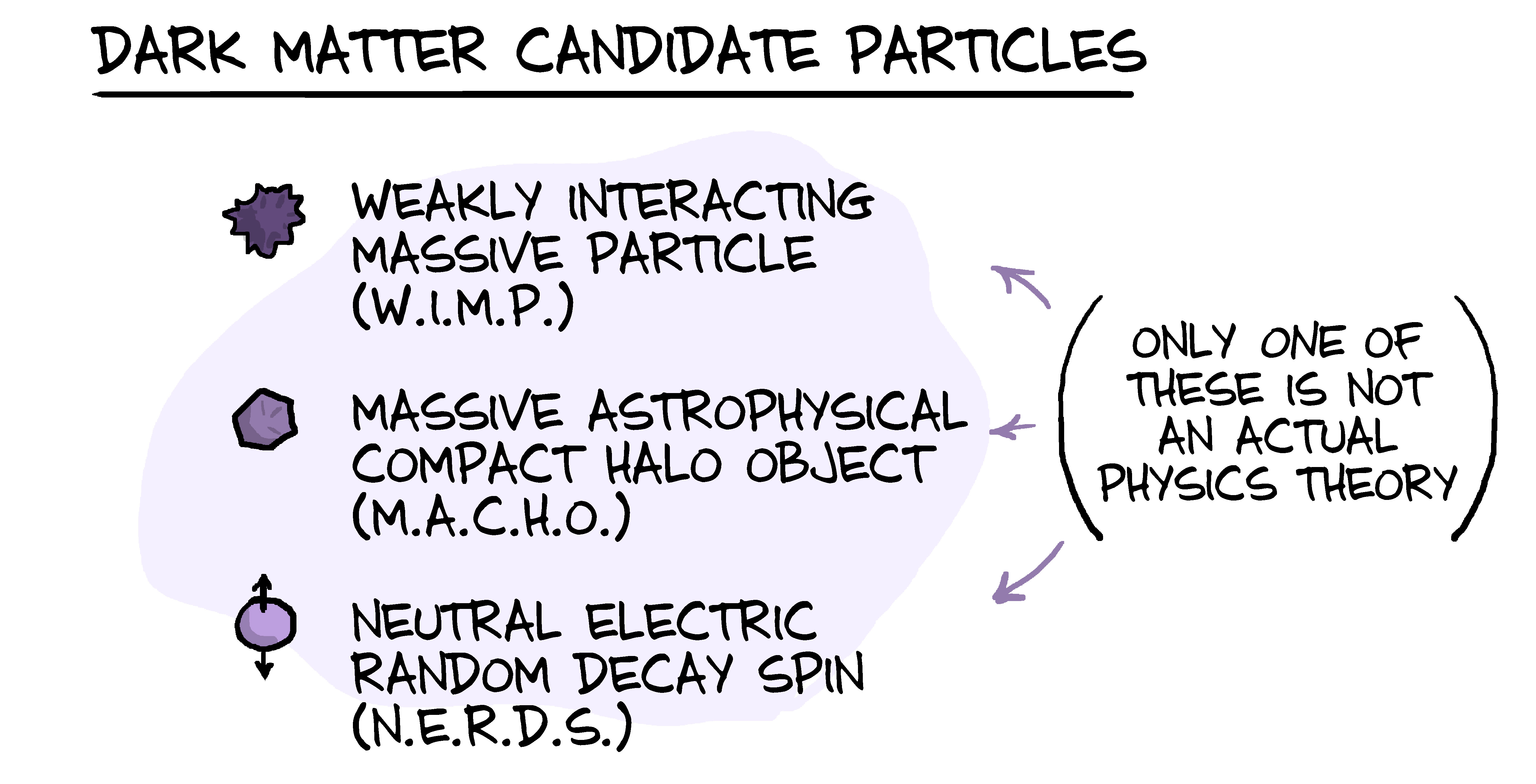'We Have No Idea' Book Explores Science's Greatest Unknowns: Q&A with the Authors

In their book "We Have No Idea" (Riverhead Books, 2017) authors Jorge Cham and Daniel Whiteson turn the trope of the popular science book on its head: Instead of exploring what we know about the incredible universe we call home, they decided to take a look at what we don't know about the cosmos, and why that's really exciting.
Cham writes the popular web comic Piled Higher and Deeper, which presents a satirical (if mostly true) account of modern academia as experienced by the "grunts" — aka the grad students. Whiteson is a professor of experimental particle physics at the University of California, Irvine. He's involved in the ATLAS collaboration at the Large Hadron Collider (LHC), where the Higgs boson was discovered. The Higgs is actually what brought Cham and Whiteson together in the first place — the two met in 2012, when Whiteson emailed asking if they could collaborate on a comic about the mysterious particle. The following year, scientists at the LHC announced that they had confirmed the particle's existence.
The authors recently spoke with Space.com about how they met, their new book and the exciting ideas currently baffling our greatest scientists. [Related: Gravitational-Wave Scientists: Q&A with Nobel Winners Kip Thorne and Barry Barish]

Space.com: What gave you the idea to approach science from the perspective of open questions rather than things scientists recently discovered?
Daniel Whiteson: I think there's a lot of misunderstanding in the public about how much science knows, how much science doesn't know. Certainly, science has learned an awesome amount about the universe. But for me personally, as a scientist, the most exciting thing is the things we don't understand, because science has always been about exploration, about sailing into the ocean of the unknown and trying to learn new things. And the exciting thing is that there are these big questions that actually do have answers. It's not like speculation or philosophy; there are answers out there that we can learn. And to me, that's really exciting.
Jorge Cham: We wanted to hook people in with the questions about what we don't know, and then use it as an excuse to talk about what we do know. One thing we did sort of develop as we went along was this idea of how science works: what are the boundaries of science, how does science grow and expand and cover more things as we go along, and how can questions go from philosophy to science.
Get the Space.com Newsletter
Breaking space news, the latest updates on rocket launches, skywatching events and more!
We see a lot of books that talk about things as if they were facts, or they just start the story with, "OK, here's what we know. We know that the universe, a few seconds after the Big Bang, there was this period of inflation. And everyone agrees on that, and that's kind of what it is."
I think for us, it was more interesting to take a step back and [say], "Hey, wait a minute. This is a crazy idea. How could we possible have arrived at these conclusions?" And so, I think in the process, we take a step back and say, "All right, people noticed this, and then they noticed this. But then, they noticed this other thing, and the only thing that could have made sense is this crazy idea of, for example, inflation." But I think, in a way, that communicates a little bit of how science gets done.

Space.com: Was there a topic where both of you felt like, "Thank goodness we have the illustrations, because otherwise this would be a nightmare to explain"?
Cham: It was helpful to draw things out in the chapter about extra dimensions — just being able to draw arrows, and draw curly arrows, and be able to show in three dimensions what it would look like for gravity to dissipate into extra loopy dimensions. I feel like that's a chapter where the graphics really helped.
Whiteson: I totally agree with Jorge. In that chapter, they [the illustrations] were really vital. But I feel like, in every chapter, they play an essential role.
In particle physics, we often use the tool the Feynman diagram, which, in the end, is just a cartoon, right? It's a simplified description of what's going on, to give you a way to think about the process and understand what's happening. [Related: String Theory: A Brief Overview]
Space.com: Scientists use diagrams, or technical cartoons, but those can still be inaccessible. It sounds like having visuals in a familiar format is just as important.
Cham: Cartoons kind of have this power. They set people at ease, and they naturally draw people's interest. It breaks down your guard in a way. Nobody opens the comics page in a newspaper and feels like they're going to get bad news, or that they're going to read something that they can’t understand. So I think they kind of have this preloaded power in them to really kind of make people feel good.

Space.com: Which topic were you most excited about? Which one really got you jumping out of your seat?
Cham: I would say my favorite ones are some of the middle chapters, where we talk about cosmic rays [and other] very tangible mysteries. Or like the one about antimatter. We have a great theory of it; we've seen it in the lab; we can create it. But there's this one aspect, one question of it that is huge, right? Why is there more matter than antimatter? And that could totally change our understanding of the universe.
Very tangible mysteries, and things that are in plain sight but just have this one question that we have no idea, that could upend everything. Those are my favorite chapters to think about.
Whiteson: I think one of my favorite ones is the question of what happened before the Big Bang. It's a science question, but it's also deeply important philosophically and metaphysically. If I could ask the universe one question and be guaranteed an answer, it might be the one that I pose, because I'm just so curious about the source, the cause, the first moments of this incredible universe.
It's incredible to me that we know anything about the moments in the early universe, and what we do know is astounding. The expansion of the universe, the inflation — it's incredible. And then the size of the questions that remain. You know, what came before? What caused it? And then, on the converse: How will it end? Where is it going? I mean, all these questions are just so big and fascinating.
It reminded me that, originally, my interest in science was more space-based than particle-based — you know, that kid looking up at the star, wondering about the universe. And sometimes, I wish I had become a cosmologist instead of a particle physicist. [Cosmologists study the origin and evolution of the universe, while particle physicists focus on determining the fundamental nature and behavior of matter.] Fortunately, these days, the two fields are getting closer and closer. Particle physics has more and more to say about cosmology.
Cham: Did you really, Daniel? I didn't know this about you.
Whiteson: Yeah, I wanted to be an astronomer. And then I spent a lot of time doing astronomy, and realizing, actually, most of astronomy is just being cold at night, staring through telescopes. It actually wasn't that exciting. To actually have a career in research, you have to be interested in the big questions. That's not a problem for astronomy. But you also have to be interested in the day-to-day work, like the actual craft of it. And I'm just not a telescope person at all.
Later on, I realized you can do a lot of astronomy that's computational and analyzing data, but I didn't have access to that when I was 10, or 12, or 14. And so it was particle physics that drew me in, in that way, because particle physics is very computational, and I'm a computer guy.
Cham: You're like, "I'd rather sit in a basement in Geneva, than sit in …"
Whiteson: Than sit on a mountain top in Hawaii.
[Geneva is home to the Large Hadron Collider, the world's largest particle accelerator, where Whiteson conducts some of his research. Meanwhile, the mountains of Hawaii host a multitude of telescopes and observatories, like the Keck Observatory on Mauna Kea]

Space.com: Was there anything that didn't make it in at the last minute?
Cham: Have you read Chapter 13 yet?
Space.com: Yeah, I did. I would really like to know about that. [The chapter "What Happened to Chapter 13?" contains a single sentence: "We have no idea."]
All: [Laughing]
Whiteson: Chapter 13 came about because we had some initial chapter ordering, and we moved things around. We deleted some ideas, and sort of close to the last minute, we realized "Oops, we are missing a chapter, Chapter 13. So we just sort of wrote that one [sentence] for the moment and though it was funny."
Cham: No, it was more mysterious than that, I think, Daniel. We had planned a chapter about black holes, but at the end, we decided not to do it. We had been shuffling the chapters around, in terms of their place in the book, and somehow it was Chapter 13 that was unaccounted for. It just kind of disappeared.
Whiteson: We had already named the chapters, given the chapters numbers, and referred to them from one chapter to the other, so renumbering them all would be a huge pain. So, in the end, jokes are born out of laziness, really.
Space.com: What do you think is the most exciting big new science project, and how might it start chipping away at one of these topics?
Whiteson: For me, [there are] two really fascinating topics that I'm looking forward to hearing the results of. One is dark-matter experiments. We don't know what dark matter is, and it's astounding that most of the matter in the universe is a mystery. And it would be wonderful to discover whether it's made of particles and what that particle's like, and one of the best ways to do that is these big underground dark-matter detectors like LUX and XENON. Those are getting big enough and quiet enough now that they really have a chance to see something. And the next few years will really tell us if dark matter is a discoverable particle.

And the other ones are the space stuff, like the James Webb telescope, that's going to give us such an amazing view of the early universe. Almost every single time humanity has built a new telescope and looked out into space, they've found something crazy — something they didn't expect, something they didn't initially understand, something that made no sense, that upended our view of what's out there. Because the universe is filled with crazy stuff. And so I'm very excited to see what the James Webb telescope discovers. [Related: Building The James Webb Space Telescope (Photos)]
Space.com: Who do you hope reads "We Have No Idea"?
Cham: Well, hopefully all the readers of Space.com. We really just want everyone to read the book.
Whiteson: We really wanted the book to be accessible to almost anybody with any interest in science. That includes precocious 10-year-olds up to 100-year-olds, and with really no background necessary.
And if anybody reads the book and has an unanswered question, they're welcome to email me. I'm happy to answer readers' questions. I love those follow-ups.
This Q&A has been edited lightly for length and clarity. You can buy "We Have No Idea" on Amazon.com.
Email Harrison Tasoff at htasoff@space.com or follow him @harrisontasoff. Follow us @Spacedotcom, Facebook and Google+. Original article on Space.com.
Join our Space Forums to keep talking space on the latest missions, night sky and more! And if you have a news tip, correction or comment, let us know at: community@space.com.

Harrison Tasoff is a science journalist originally from Los Angeles. He graduated from NYU’s Science, Health, and Environmental Reporting Program after earning his B.A. in mathematics at Swarthmore College. Harrison covers an array of subjects, but often finds himself drawn to physics, ecology, and earth science stories. In his spare time, he enjoys tidepooling, mineral collecting, and tending native plants.









